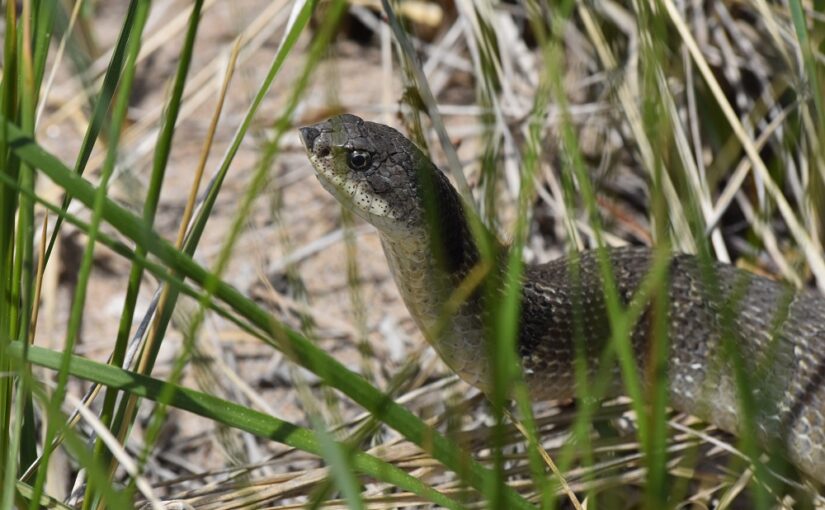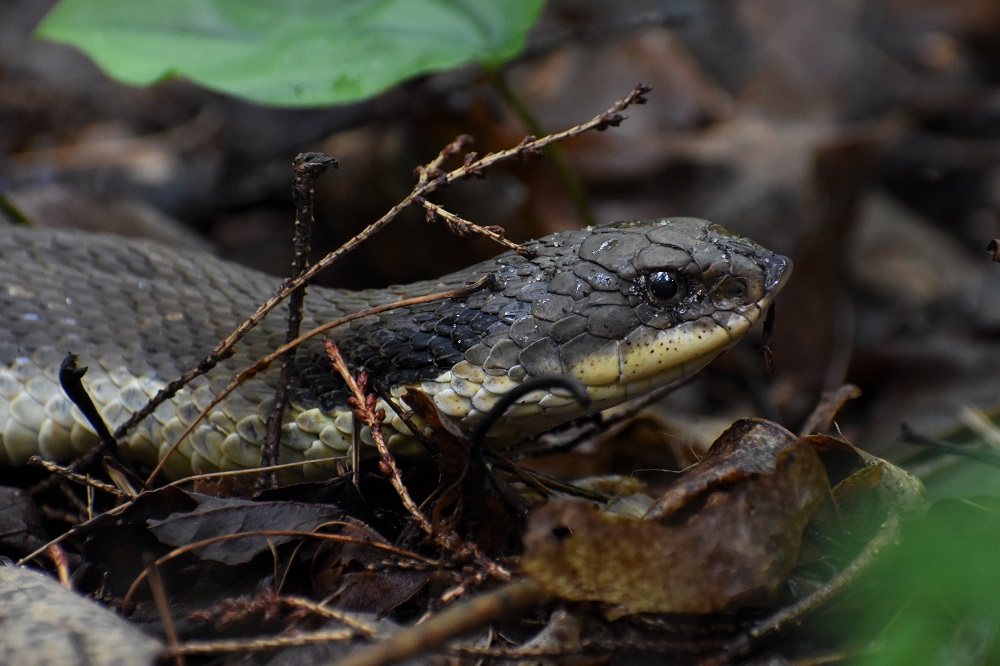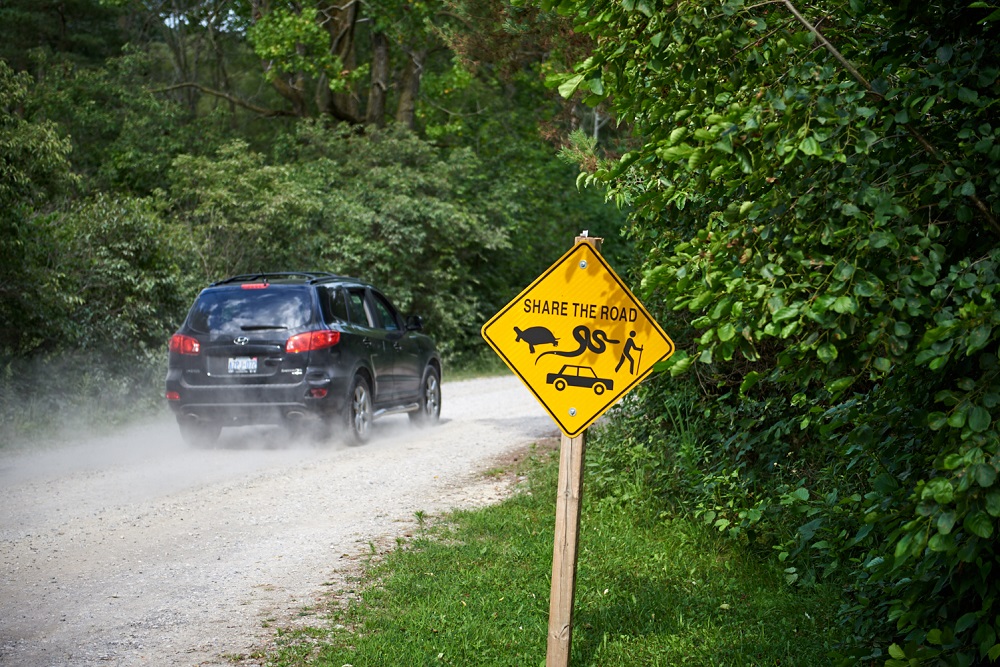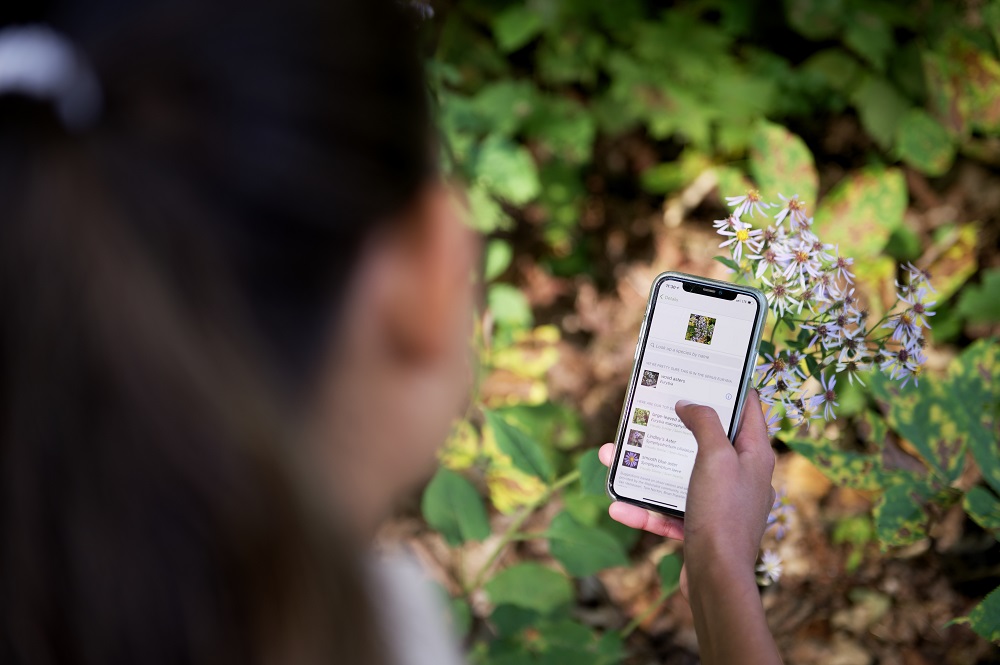Today’s post comes from Nicholas Ypelaar, former assistant Discovery coordinator at Awenda Provincial Park.
“EW! SNAKES!” and/or accompanying fearful shrieks are phrases I’m all too familiar with.
In defense of all those who have zero affinity to the limbless scaled reptiles of the world, I can understand it. My grandmother grew up in Goa, India, where venomous snakes such as cobras and kraits are commonplace.
As humans, we tend to build fears based on what we perceive as dangerous to help us survive. However, we aren’t the only species trying to survive.
I’d like to dispel the myth that Ontario snakes are dangerous through the lens of a particular “bad actor,” the threatened Eastern Hog-nosed Snake.
Snakes offer a fascinating glimpse into the wide range of biodiversity in our province.
Across Ontario’s 340+ provincial parks, there are a variety of forest, field, rock barren, and semi-aquatic habitats that support 15 different species of snake.
However, of the 15 species, none can match the eccentric behaviour of the Eastern Hog-nosed Snake.
An interesting nose job, overly dramatic behaviour, and an aptitude for finding toads are just a few of the many reasons why Ontario’s Eastern Hog-nosed Snake is a personal favourite.
Despite all my provincial exploration (Thanks, Dad, for all the Ontario Parks camping trips!), it was only when I started working as a student naturalist at Awenda that I got my first glimpse of an Eastern Hog-nosed Snake.
It has been six years and it seems this extraordinary animal has been with me every step (or slither!) of the way on my journey as a naturalist.
Master thespian of the snake world
The Eastern Hog-nosed Snake is a moderately sized snake, endemic to Eastern North America.
As its name suggests, this rear-fanged snake sports a distinctive upturned snout, which shares some resemblance to that of a hog.
The other distinctive feature of this species of snake is the two prominent black markings on their necks, which it tends to flatten out (somewhat like a cobra’s “hood”) when it feels threatened.
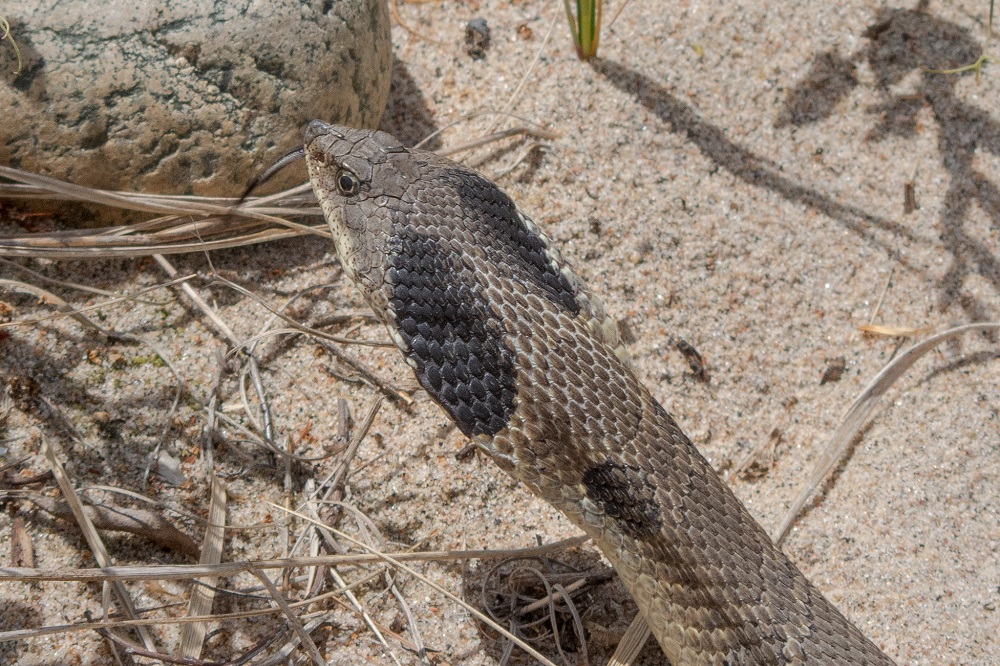
Despite the occasional hooded appearance, the Eastern Hog-nosed Snake is non-venomous and is more likely to flee than fight.
If the hissing and flattening of its neck aren’t enough to scare off a potential predator, it will secrete a very foul-smelling musk that resembles the stench of rotting flesh.
As I learned the hard way in my second summer at Awenda, picking up an Eastern Hog-nosed Snake for weighing and measuring can occasionally result in the unpleasant odour of musk staining your nostrils for a considerable amount of time.
Gross, but effective!
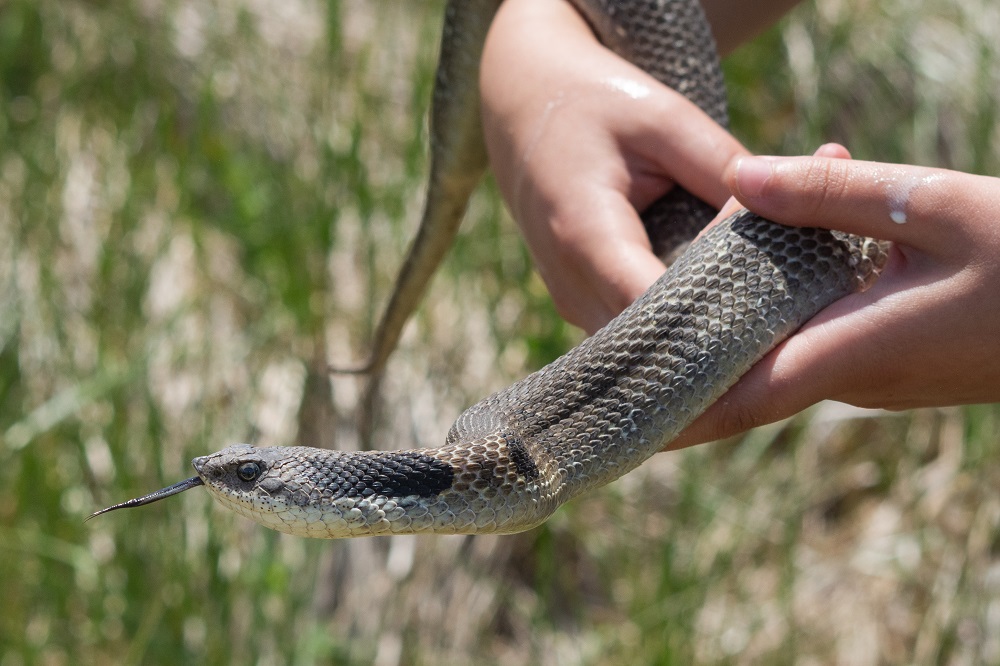
If the putrid smell doesn’t work, the Eastern Hog-nosed Snake will get into the theatrics, sometimes deploying a “false bite” whereby the snake lunges forward, striking with a closed mouth in an ultimately innocuous attempt to scare off would-be predators.
How’s that for allaying your fears!
If none of these do the trick and the snake cannot escape, it will “play dead,” rolling onto its back with its mouth wide open and tongue sticking out.
Not exactly Academy Award-worthy, but any onlooking cinephiles could appreciate the effort. Despite its extravagant defensive posturing, the Eastern Hog-nosed Snake is harmless to humans.
Finding friends
Here at Awenda, we occasionally receive calls from nearby cottagers who encounter snakes on their property and ask in fear that we move them.
One such occasion occurred in 2017, my first summer at Awenda.
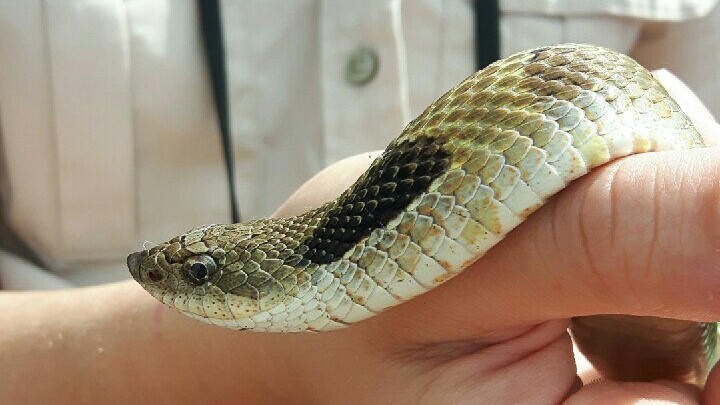
Both the cottagers and I were amazed at how docile and calm the juvenile hog-nosed was once Chief Park Naturalist picked it up.
After a quick myth-busting chat outlining the species’ acting prowess, we were able to carefully move the snake away from the cottage with the owner’s blessing while keeping “their” new friend close by.
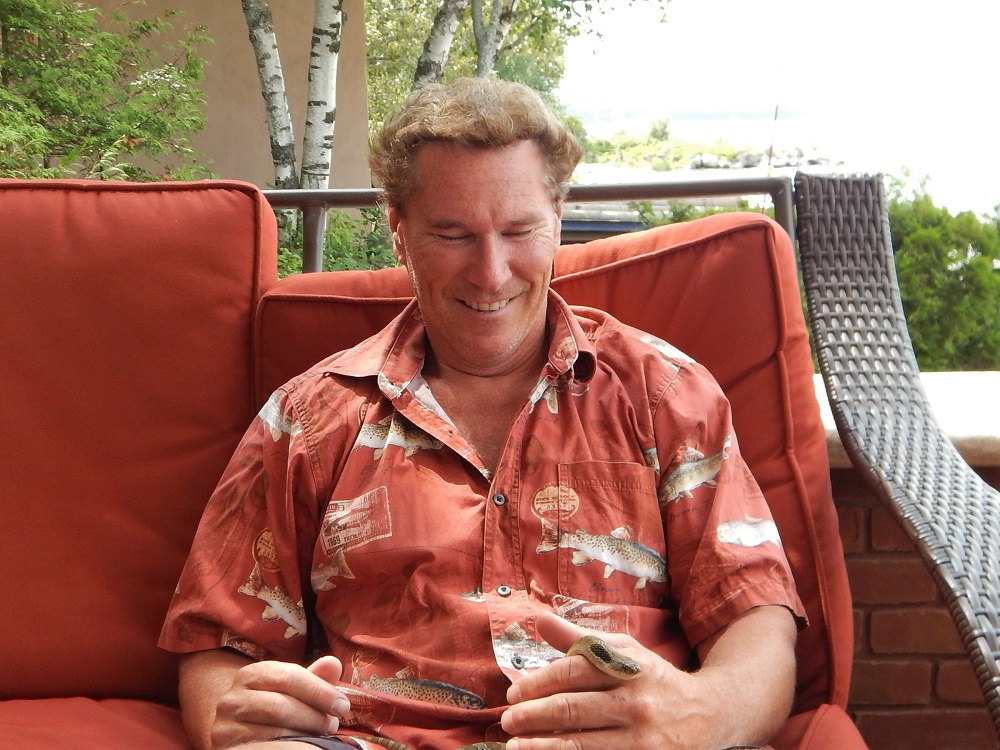
Phobias rest in peace, a new Hog-nosed snake steward was born that day.
Theatrics often lead to bad reviews
In Canada, the Eastern Hog-nosed Snake is only found in Ontario. Its range is limited to the Carolinian Region and central Ontario east of Georgian Bay and south of the French River.
Unlike other snakes, such as the generalist Common Garter Snake which inhabits a wide variety of habitats, hog-nosed snakes have very specific habitat needs.
Unfortunately, Ontario hog-nosed snake population declines are suspected to be greater than 30% across the province over a 20 year period, leading to a threatened species at-risk designation.
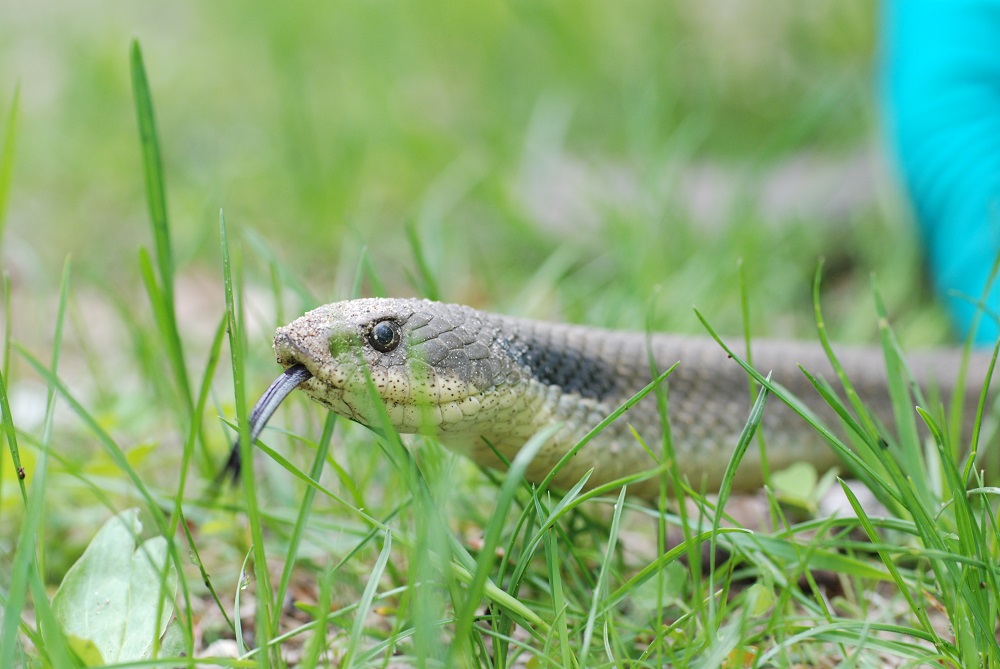
Some of the most significant threats faced by Eastern Hog-nosed Snakes are road mortality, habitat loss, and persecution by humans.
Ontario Parks provides safe refuge from land development and habitat fragmentation, but road mortality is a constant threat.
A lack of legs means hog-nosed snakes are slow moving animals and roads are barriers that result in either death or geographic isolation.
Although they are slow-moving, Eastern Hog-nosed Snakes have been observed having home ranges of over 100 ha in some cases. That’s as big as Rideau River Provincial Park!
This increased mobility leads it to increased encounters with roads which results in a regrettably high road-mortality rate.
Here’s how you can help:
Brake for snakes
One of the easiest and most helpful things you can do for Eastern Hog-nosed Snakes, is so simple – drive slowly!
Not only will this allow you to better enjoy the scenic drive throughout your favourite provincial park, but it will also give you enough time to slow down and brake for snakes.
Over the past few years, I’ve unfortunately encountered several dead hog-nosed snakes killed on park roads.
At Awenda, we’ve installed several wildlife crossing signs to help remind people that we’re sharing our park roads with snakes and other wildlife too.
If it’s safe, you could even go the extra mile and take the time to shepherd or move the individual snake safely across the road gauntlet.
Commit to community science
As my fellow naturalists and colleagues alike will tell you, there is a conservation revolution in process.
The vanguard is the incredible community science app, iNaturalist!
Like other community science platforms, iNaturalist allows everyone to participate in meaningful science and conservation.
It’s as easy as taking a photo of that organism you’ve seen (like a snake hunting toads or crossing a road… even a dead specimen) and clicking one button to upload it to the largest online network of scientists and nature-lovers in the world.
Because they are never found in high densities, as well as their solitary nature and large home roaming ranges, a comprehensive population study of hog-nosed snakes is a difficult task.
Monitoring elusive and shy animals like Eastern Hog-nosed Snakes on a larger scale is impossible without your help!
Don’t fear the hog-nosed snake
Public perception of snakes in Ontario seems to have changed dramatically for the better in recent years.
Even if many of us do not absolutely love snakes, many humans have grown to tolerate them.
And so I challenge you: if you are lucky enough to encounter an Eastern Hog-nosed Snake, or any snake in Ontario, try not to shriek and recoil like my grandmother would have.
Instead put yourself in their shoes…er, scales…and reflect on how you can help these vulnerable creatures.
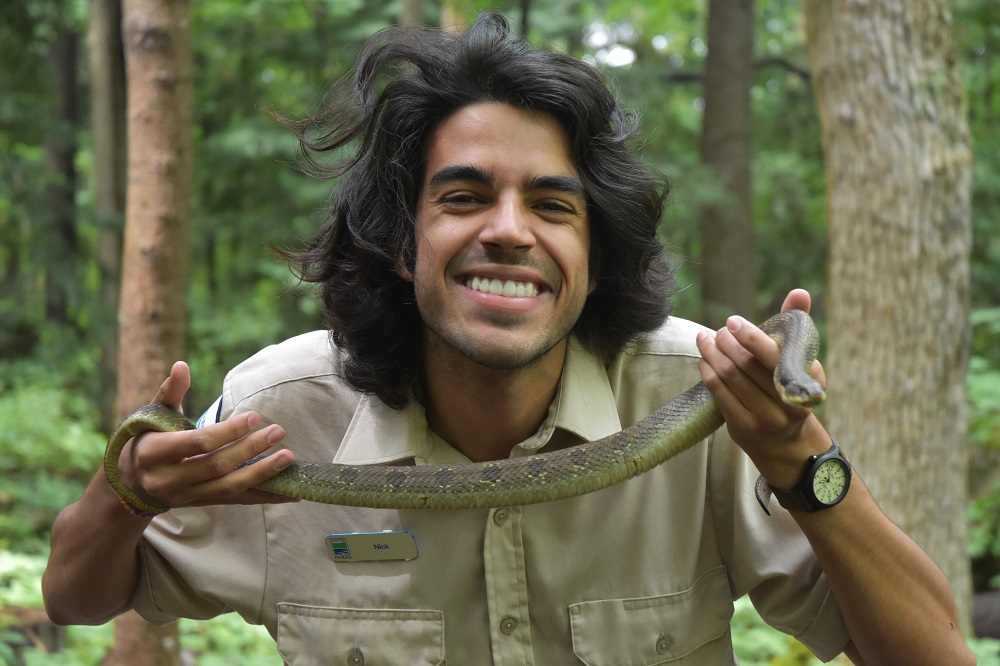
As acting lessons are out of the question, it’s up to you to act on their behalf. It’s not time for a final curtain call for this threatened species.
Besides, we all can appreciate a good spaghetti western, so hopefully one day you’ll have a chance to see their dreadful performance for yourself!
Considering the increased pressures of climate change, urban development, and habitat loss, the Eastern Hog-nosed Snake needs our help.
Unlike the hognose, we have hands to lend, so…
It’s up to you for goodness snakes!
This is the eighth edition of our 2023 species-at-risk series.
Read our previous edition: “Peent! Peent!” Here comes the Common Nighthawk
Why are your scientists picking up wildlife? Can I pick up snakes and turtles too?
Please do not handle birds, mammals, or reptiles unless you are helping to safely move them off the road or engaging with park staff. The staff members featured here are trained biologists engaged in professional research. These biologists are following a strict animal care protocol approved by the Ministry of Natural Resources and Forestry. These protocols review the desired outcome of the research, and ensure measures are taken to put the least possible amount of stress on the animal. We ask that you always observe animals from a distance for both the safety of you and the animal.
